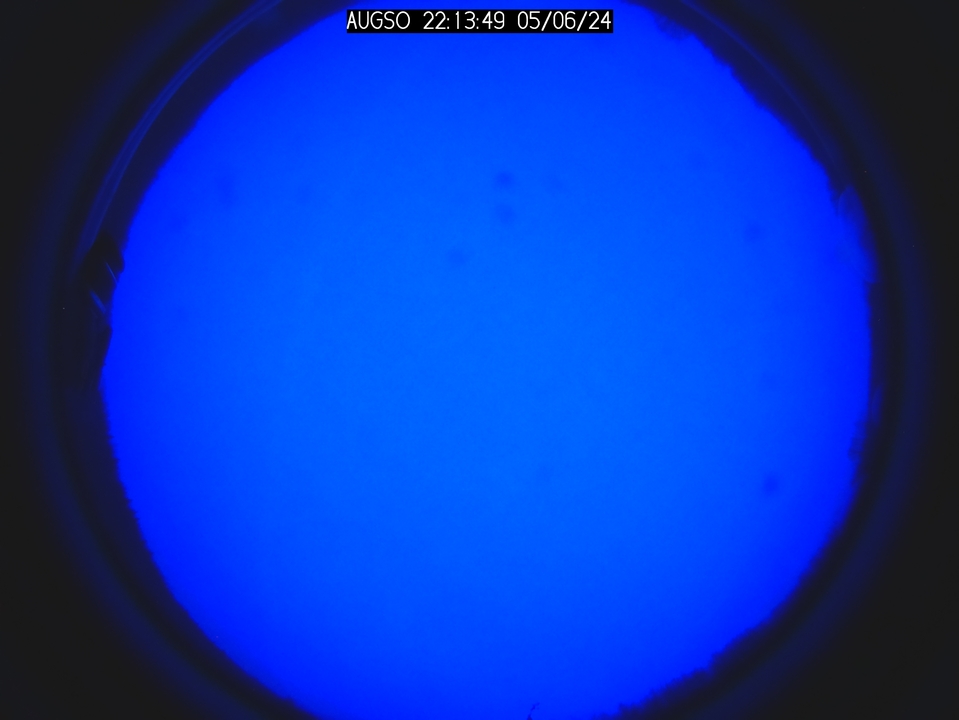-
Curiosity Finds Ancient Wave Ripples on Mars
NASA?s Curiosity Rover has been exploring Mars since 2012 and, more recently has found evidence of ice-free ancient ponds and lakes on the surface. The rover found small undulations like those seen in sandy lake-beds on Earth. They would have been created by wind-driven water moving back and forth across the surface. The inescapable conclusion …
Continue reading "Curiosity Finds Ancient Wave Ripples on Mars"
The post Curiosity Finds Ancient Wave Ripples on Mars appeared first on Universe Today.
-
The Star-Forming Party Ended Early in Isolated Dwarf Galaxies
Gas is the stuff of star formation, and most galaxies have enough gas in their budget to form some stars. However, the picture is a little different for dwarf galaxies. They lack the mass required to hold onto their gas when more massive neighbouring galaxies are siphoning it off. New research shows that even isolated …
Continue reading "The Star-Forming Party Ended Early in Isolated Dwarf Galaxies"
The post The Star-Forming Party Ended Early in Isolated Dwarf Galaxies appeared first on Universe Today.
-
A Tether Covered in Solar Panels Could Boost the ISS?s Orbit
The ISS’s orbit is slowly decaying. While it might seem a permanent fixture in the sky, the orbiting space laboratory is only about 400 km above the planet. There might not be a lot of atmosphere at that altitude. However, there is still some, and interacting with that is gradually slowing the orbital speed of …
Continue reading "A Tether Covered in Solar Panels Could Boost the ISS’s Orbit"
The post A Tether Covered in Solar Panels Could Boost the ISS’s Orbit appeared first on Universe Today.
-
Habitable Worlds Could Have Formed Before the First Galaxies
What came first, galaxies or planets? The answer has always been galaxies, but new research is changing that idea. Could habitable planets really have formed before there were galaxies? In the immediate aftermath of the Big Bang, there were no heavy elements. There was only hydrogen, which comprised about 75% of the mass, and helium, …
Continue reading "Habitable Worlds Could Have Formed Before the First Galaxies"
The post Habitable Worlds Could Have Formed Before the First Galaxies appeared first on Universe Today.
-
Hubble Takes a 2.5 Gigapixel Image of Andromeda
The Andromeda galaxy is our closest galactic neighbour, barring dwarf galaxies that are gravitationally bound to the Milky Way. When conditions are right, we can see it with the naked eye, though it appears as a grey smudge. It’s the furthest object in the Universe that we can see without telescopic help. The Hubble Space …
Continue reading "Hubble Takes a 2.5 Gigapixel Image of Andromeda"
The post Hubble Takes a 2.5 Gigapixel Image of Andromeda appeared first on Universe Today.
-
Black Holes are Spinning Faster Than Expected
There’s a Universe full of black holes out there, spinning merrily away?some fast, others more slowly. A recent survey of supermassive black holes reveals that their spin rates reveal something about their formation history. If you want to describe a supermassive black hole’s characteristics, there are two important numbers to use. One is its mass …
Continue reading "Black Holes are Spinning Faster Than Expected"
The post Black Holes are Spinning Faster Than Expected appeared first on Universe Today.
-
Webb Sees Light Echoes in a Supernova Remnant
Supernovae are one of the most useful events in all of astronomy. Scientists can directly measure their power, their spin, and their eventual fallout, whether that’s turning into a black hole or a neutron star in some cases or just a much smaller stellar remnant. One of these events happened around 350 years ago (or …
Continue reading "Webb Sees Light Echoes in a Supernova Remnant"
The post Webb Sees Light Echoes in a Supernova Remnant appeared first on Universe Today.
-
NASA is Building a Space Telescope to Observe Exoplanet Atmospheres
The exoplanet census continues to grow. Currently, 5,819 exoplanets have been confirmed in 4,346 star systems, while thousands more await confirmation. The vast majority of these planets were detected in the past twenty years, owing to missions like the Kepler Space Telescope, the Transiting Exoplanet Survey Satellite (TESS), the venerable Hubble, the Convection, Rotation and …
Continue reading "NASA is Building a Space Telescope to Observe Exoplanet Atmospheres"
The post NASA is Building a Space Telescope to Observe Exoplanet Atmospheres appeared first on Universe Today.
-
New Glenn Reaches Orbit, but Doesn't Recover the Booster
On Thursday, January 16th, at 02:03 AM EST, Blue Origin’s New Glenn rocket took off on its maiden flight from Launch Complex 36 at Cape Canaveral Space Force Station. This was a momentous event for the company, as the two-stage heavy-lift rocket has been in development for many years, features a partially reusable design, and …
Continue reading "New Glenn Reaches Orbit, but Doesn't Recover the Booster"
The post New Glenn Reaches Orbit, but Doesn't Recover the Booster appeared first on Universe Today.
-
Astronomers are Watching a Newly Forming Super Star Cluster
Six or seven billion years ago, most stars formed in super star clusters. That type of star formation has largely died out now. Astronomers know of two of these SSCs in the modern Milky Way and one in the Large Magellanic Cloud (LMC), and all three of them are millions of years old. New JWST …
Continue reading "Astronomers are Watching a Newly Forming Super Star Cluster"
The post Astronomers are Watching a Newly Forming Super Star Cluster appeared first on Universe Today.




 Space News Feeds
Space News Feeds 




 Aurora Watch Website. Version 1.0.
Aurora Watch Website. Version 1.0.